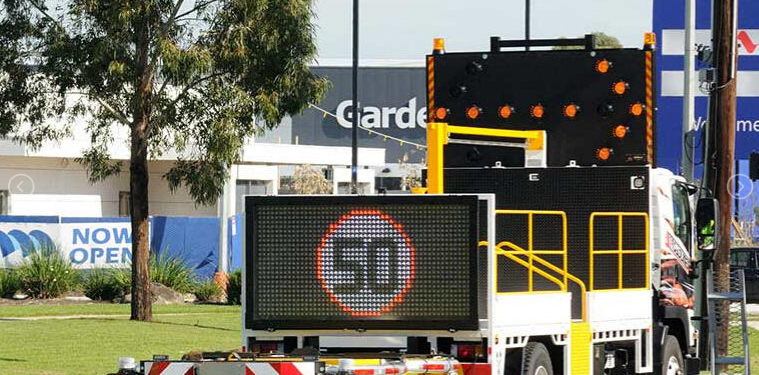How Do Variable Message Signs Work? A Simple Guide
Variable Message Signs (VMS)
are a common sight on highways, roads, and expressways, providing drivers with important information about traffic conditions, road closures, and safety alerts. These electronic signs are crucial tools in modern traffic management, helping to improve road safety, reduce congestion, and enhance communication between transportation authorities and drivers. In this simple guide, we'll explore how Variable Message Signs work, their components, and their significance in traffic management.
1. Components of Variable Message Signs
Before delving into how Variable Message Signs work, it's essential to understand their basic components:
- Display Panel: This is the most visible part of a Variable Message Sign. It typically consists of a matrix of light-emitting diodes (LEDs) that form characters, symbols, or graphics to convey information to drivers.
- Support Structure: The display panel is mounted on a support structure, often a gantry or a roadside pole. The support structure ensures the sign is visible to drivers at the appropriate distance.
- Control System: A central control system manages the display panel. This system receives data and instructions from various sources, allowing it to update the information on the sign as needed.
- Power Supply: VMS require a reliable power source, often connected to the electrical grid. Backup power sources like batteries or generators may be employed to ensure functionality during power outages.
- Communication Links: VMS receive data from various sources, including traffic management centers, weather monitoring systems, and incident reporting platforms, through communication links such as fiber optic cables, wireless networks, or cellular connections.
2. Data Sources
Variable Message Signs rely on data from various sources to display accurate and up-to-date information to drivers. These sources include:
- Traffic Management Centers: These centers monitor traffic flow, incidents, and congestion. They can update VMS with real-time information to help drivers make informed decisions.
- Weather Monitoring Systems: Weather conditions can significantly impact road safety. Data from weather monitoring systems can be used to alert drivers about adverse conditions like heavy rain, snow, or fog.
- Incident Reporting Systems: These systems collect data on accidents, road closures, and other incidents. VMS can display messages warning drivers of such situations and suggesting alternative routes.
- Traffic Sensors: In some cases, traffic sensors embedded in the road surface can provide real-time data on traffic density and speed. VMS can use this information to inform drivers about upcoming congestion.
- Preprogrammed Messages: VMS can display preprogrammed messages such as speed limit reminders, safety alerts, or construction zone warnings. These messages are typically scheduled and can be changed as needed.
3. How VMS Work
The operation of Variable Message Signs can be summarized in a few key steps:
Data Collection: Information from various sources, as mentioned above, is collected and sent to the control system of the VMS. This data includes real-time traffic conditions, weather updates, incident reports, and preprogrammed messages.
Data Processing: The control system processes the received data and determines which message to display on the VMS. For example, in the case of heavy traffic ahead, the system may choose to display a message advising drivers to consider an alternate route.
Message Display: The control system sends the chosen message to the display panel of the VMS. The panel uses LED lights to form characters, symbols, or graphics, which are easily readable by drivers, even at a distance.
Update Frequency: VMS continuously update information as new data becomes available. This ensures that drivers are provided with the most current and relevant information to make informed decisions while on the road.
4. Significance in Traffic Management
Variable Message Signs play a crucial role in traffic management and road safety for several reasons:
Real-Time Traffic Information: VMS provide drivers with real-time information about traffic conditions, helping them avoid congestion, reduce travel time, and make safer driving decisions.
Emergency Alerts: In the event of accidents, road closures, extreme weather, or other emergencies, VMS can quickly disseminate information to drivers, allowing them to take appropriate actions to stay safe and find alternative routes.
Promoting Safe Driving: VMS can display messages about speed limits, lane closures, or warnings about adverse weather conditions, all of which contribute to safer driving habits.
Reducing Congestion: By providing drivers with information about traffic conditions ahead, VMS can help prevent congestion and traffic jams, improving overall traffic flow.
Alternative Route Suggestions: VMS can suggest alternative routes when traffic conditions are unfavorable, which can help distribute traffic more evenly and reduce the strain on overloaded roadways.
Improved Communication: Transportation authorities can use VMS to communicate with drivers on a large scale, ensuring that important information reaches a broad audience quickly.
conclusion
Variable Message Signs are valuable tools in modern traffic management. They work by collecting data from various sources, processing it, and displaying relevant information to drivers using LED displays. Their significance lies in their ability to enhance road safety, reduce congestion, and improve communication between transportation authorities and drivers. As technology continues to advance, we can expect Variable Message Signs to play an even more prominent role in our efforts to manage and optimize traffic on our roadways.









Leave a comment